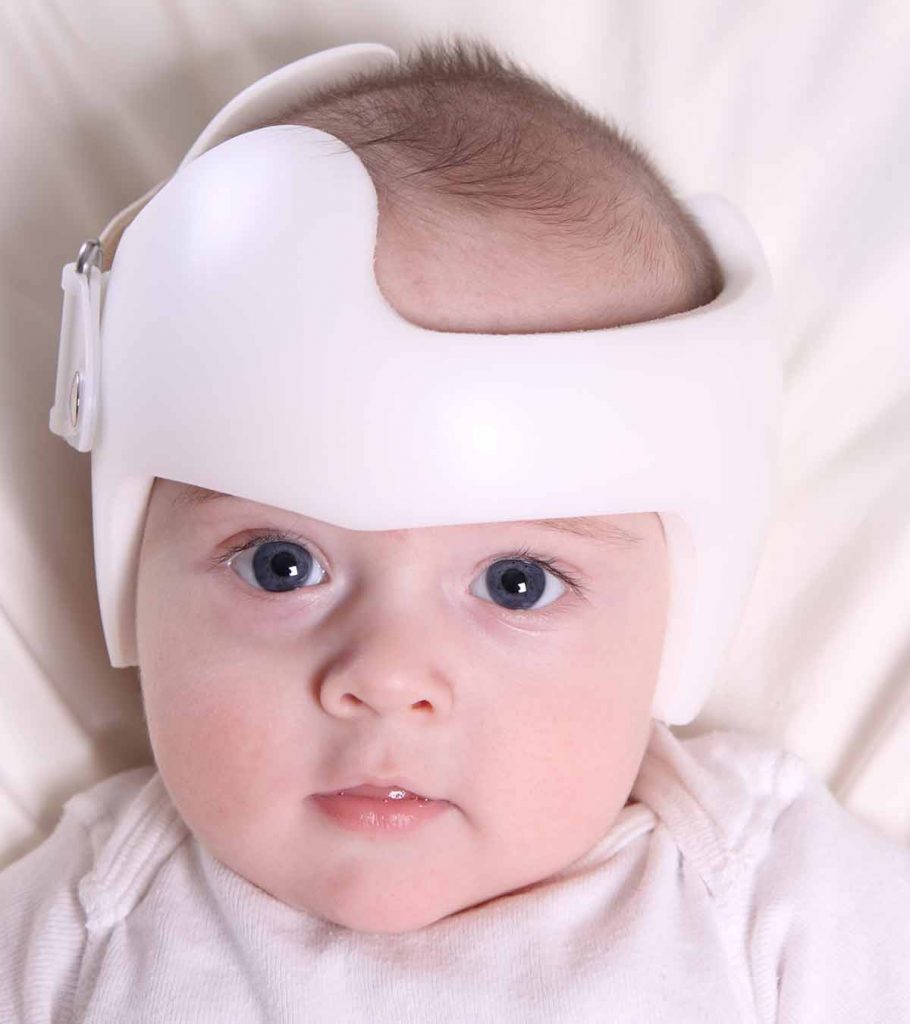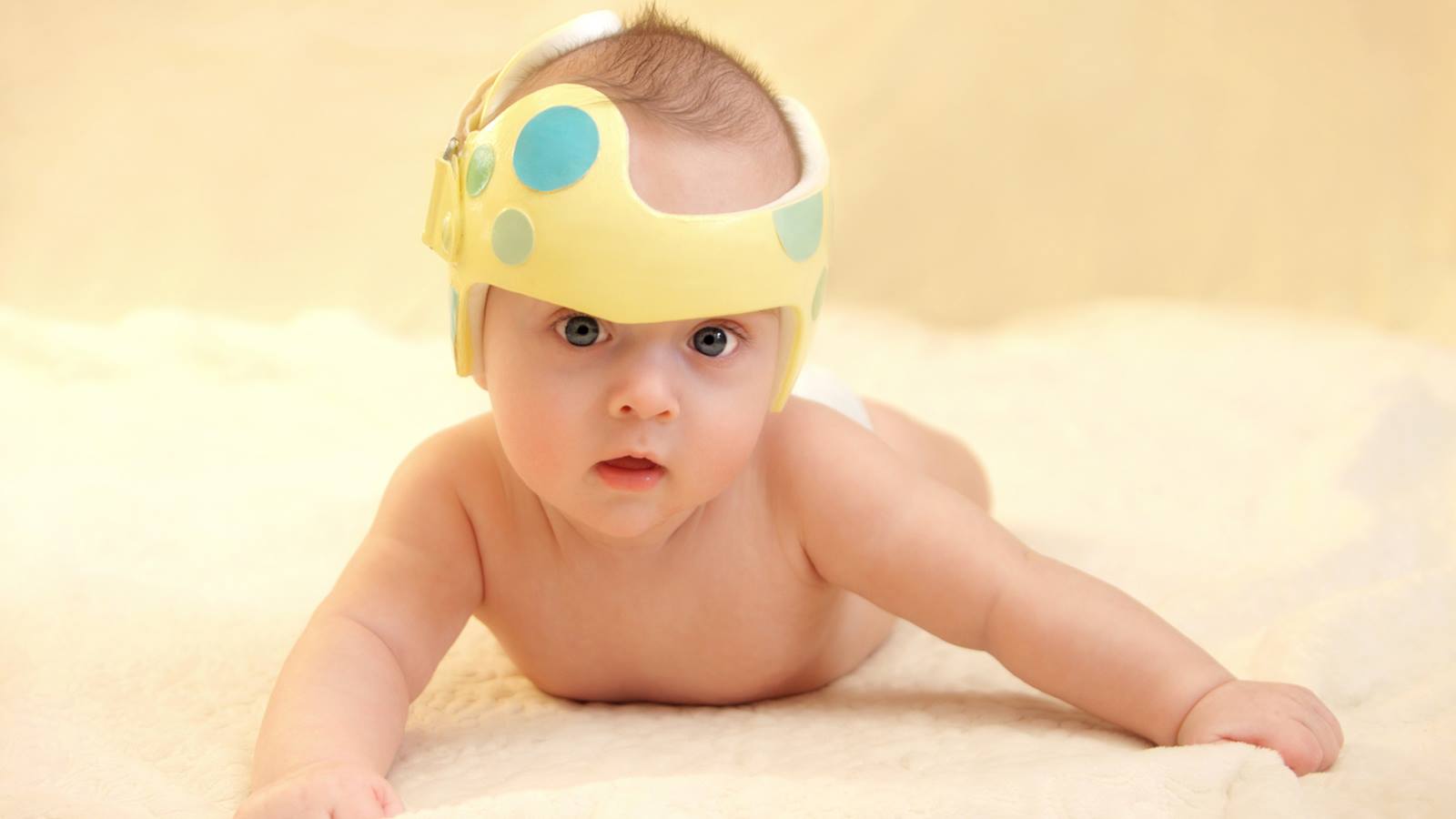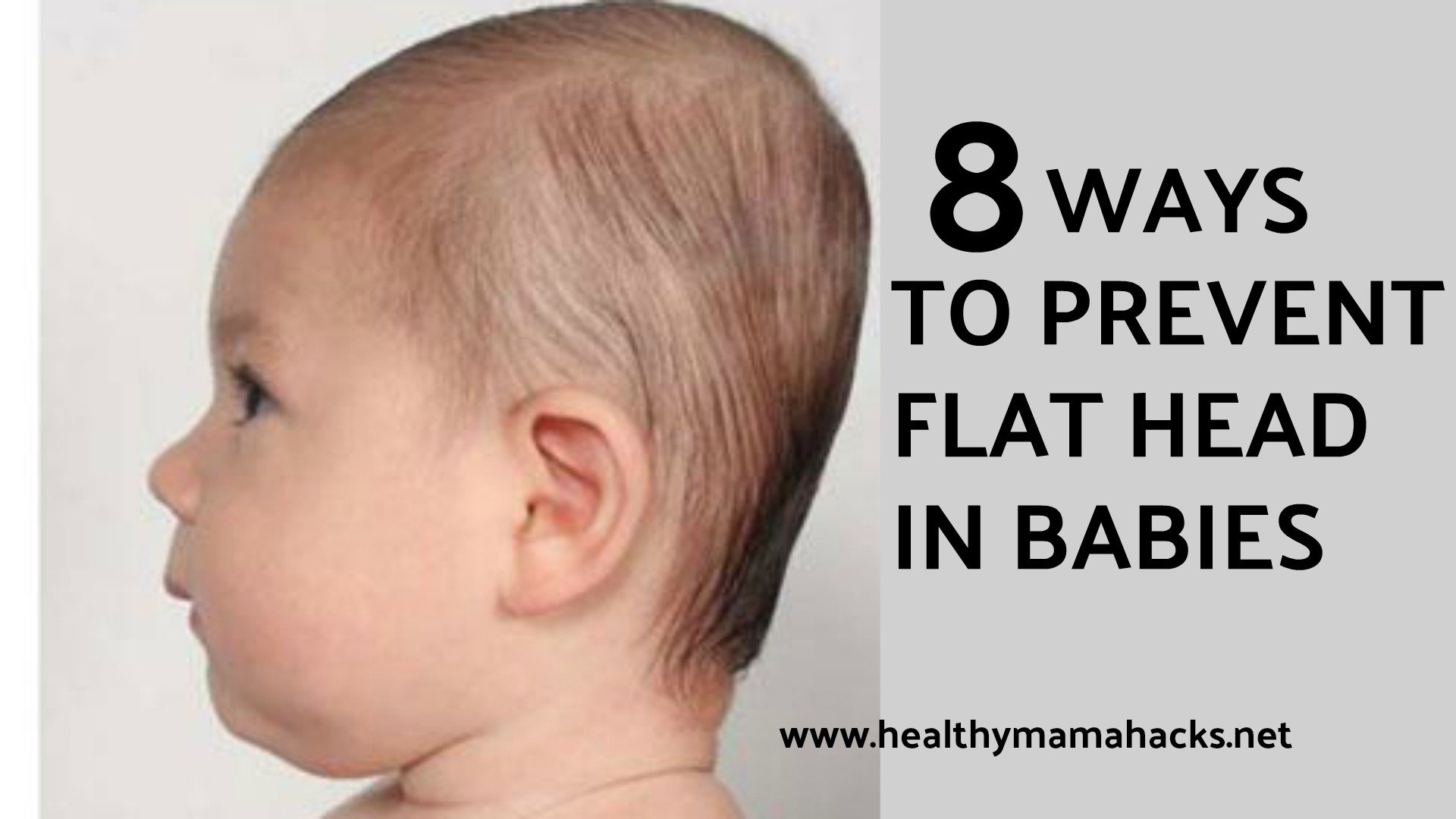This causes a flat spot either on one side or the back of the head. However it will take time for your babys head to return to a healthy rounded shape.
 Flat Head Baby Page 1 Line 17qq Com
Flat Head Baby Page 1 Line 17qq Com
A developing flat spot on a babies skull can be a red flag that the baby has tightness of the neck muscles or Torticollis.

When do babies get flat heads. If your baby has a large flat spot that isnt getting better by about 4 months of age your doctor may prescribe a helmet. By the time that your child is 1-2 years old any flatness will be barely noticeable. It affects up to 50 percent of babies according to the American Academy of Family Physicians.
It is purely a shape issue. The first four months of your baby is very critical and its the very time when your baby is at the highest risk of getting plagiocephaly. From that view the back of your babys head might look flatter on one side than on the other.
Babies who sleep on their back are much less likely to die of sudden infant death syndrome SIDS. It can take 9-18 months before a babys skull is fully formed. Positional molding might be most noticeable when youre looking at your babys head from above.
Putting baby to sleep face-up on a firm mattress which puts pressure on the back of the head Time spent lying flat in a car seat or swing. But during that time you can re-form your babys flat head by adapting some effective methods. For the first 6 months the safest place for your baby to sleep is on his back in a crib in your room.
Flat head syndrome presents as a flattened area on the back or side of a babys head. During this time some babies develop positional plagiocephaly. It can be a warning sign that baby isnt getting enough opportunities for movement this might be from something going on within babys brain or body or from the overuse of cute and convenient pieces of baby gear.
The most common causes of the condition include. Preventing flat heads in babies who sleep on their backs Why do some babies develop flat spots on their heads. A helmet is not often necessary since remodeling usually happens naturally by a year or two of age.
The most common type is positional which is also known as deformational. Some babies develop flat spots on one side or the other because they stare out in the same direction all the time. Its typically noticed by the parent up.
Flat head syndrome is also called positional plagiocephaly pu-ZI-shu-nul play-jee-oh-SEF-uh-lee. Is an uneven head shape cause for worry. This means that there is a flat area on the back or side of the head.
This is important as it reduces that risk of sudden unexpected infant death. These visits happen about every 2 months during infancy. Your baby is doing a lot of growing in the first year of his life and his head is a significant part of that.
The ear on the flat side might look pushed forward. This can help if your baby tends to tilt his head to one side or the other while sleeping to look toward a window for instance. Because in that period babies dont have control of their head movement.
Flat head syndrome usually happens when a baby sleeps with the head turned to the same side during first months of life. There are actually two types of plagiocephaly. For a helmet to be effective treatment should begin between 4 and 6 months of age.
If you would like to find out more information about your babys head shape our free severity assessment app is available on our website. Plagiocephaly and brachycephaly flat head syndrome Babies sometimes develop a flattened head when theyre a few months old usually as a result of them spending a lot of time lying on their back. There are two main types of flat head.
This simple-to-use tool allows you to upload a photograph of your babys head shape and compare it. Even if the back of their head is flat your baby still needs to be on their back to sleep. The best age for flat head syndrome treatment is between the ages of 4 to 7 months as the growth rate is still high and the structures of the skull are still pliable.
SIDS is when an otherwise healthy baby under the age of 1 dies suddenly and unexpectedly and for. Flat head syndrome or plagiocephaly occurs when a babys head develops a flat spot. Your doctor will check your babys head size and shape at each well-child visit.
Positional plagiocephaly does not affect brain growth or development. In severe cases it can affect the alignment of the ears eyes and jaw. This is because their skull is made up of different plates of bone that are mobile and relatively soft.
Babies can develop a flat head in the first few months of life. This is known as flat head syndrome and there are 2 main types.
 Flat Head Syndrome Plagiocephaly Causes Symptoms And Treatment
Flat Head Syndrome Plagiocephaly Causes Symptoms And Treatment
 Flat Head February 2018 Babies Forums What To Expect
Flat Head February 2018 Babies Forums What To Expect
 Does My Infant Need A Helmet Understanding Positional Plagiocephaly
Does My Infant Need A Helmet Understanding Positional Plagiocephaly
 Plagiocephaly How To Prevent Flat Head In Babies Healthy Mama Hacks
Plagiocephaly How To Prevent Flat Head In Babies Healthy Mama Hacks

 7 Helpful Tips To Prevent Flat Head In Babies 2 Month Old Baby 2 Month Baby Baby Month By Month
7 Helpful Tips To Prevent Flat Head In Babies 2 Month Old Baby 2 Month Baby Baby Month By Month
 Baby Has Flat Spot On Head Online
Baby Has Flat Spot On Head Online
 A Flat Head Is Common In Newborns But Why Do Babies Have Flat Heads In The First Place Let S Understand That Flat Head Pillow New Baby Products Head Pillow
A Flat Head Is Common In Newborns But Why Do Babies Have Flat Heads In The First Place Let S Understand That Flat Head Pillow New Baby Products Head Pillow
 Flat Head Syndrome Baby Pillow Flat Head Syndrome Baby Pillows Flat Head Baby
Flat Head Syndrome Baby Pillow Flat Head Syndrome Baby Pillows Flat Head Baby
 3 Month Old Baby Flat Head Online
3 Month Old Baby Flat Head Online

![]() Plagiocephaly How To Prevent Flat Head In Babies Healthy Mama Hacks
Plagiocephaly How To Prevent Flat Head In Babies Healthy Mama Hacks
 Baby S Head Is Getting Flat Online
Baby S Head Is Getting Flat Online
 The 4 Biggest Myths About Head Flattening In Babies Cando Kiddo
The 4 Biggest Myths About Head Flattening In Babies Cando Kiddo
No comments:
Post a Comment
Note: Only a member of this blog may post a comment.